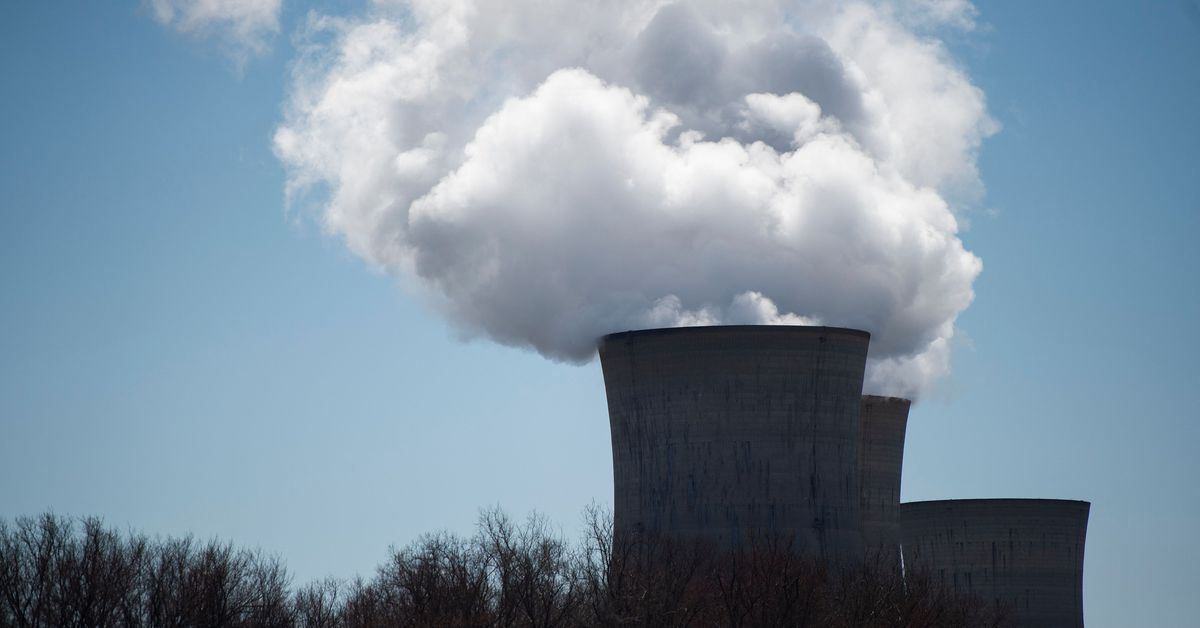Tech giants are increasingly eyeing nuclear reactors to power their energy-hungry data centers. Amazon and Microsoft each inked major deals this year with nuclear power plants in the US. And both Microsoft and Google have shown interest in next-generation small modular reactors that are still in development.
New AI data centers need a lot of electricity, which has taken companies further away from their climate goals as their carbon emissions grow. Nuclear reactors could potentially solve both of those problems. As a result, Big Tech is breathing new life into America’s aging fleet of nuclear reactors while also throwing its weight behind emerging nuclear technologies that have yet to prove themselves.
“Certainly, the prospects for this industry are brighter today than they were five and 10 years ago,” says Mark Morey, senior adviser for electricity analysis at the US Department of Energy’s Energy Information Administration.
“Certainly, the prospects for this industry are brighter today”
Much of America’s aging nuclear fleet came online in the 1970s and 1980s. But the industry has faced pushback following high-profile accidents like Three Mile Island and the Fukushima disaster in Japan. Nuclear power plants are also expensive to build and generally less flexible than gas plants that now make up the biggest chunk of the US electricity mix. Gas-fired power plants can more quickly ramp up and down with the ebb and flow of electricity demand.
Nuclear power plants typically provide steady “baseload” power. And that makes it an attractive power source for data centers. Unlike manufacturing or other industries that operate during daytime business hours, data centers run around the clock.
“When people are sleeping and offices are shut and we’re not using as much [electricity], what matches nuclear energy very nicely with data centers is that they pretty much need power 24/7,” Morey says.
That consistency also sets nuclear apart from wind and solar power that wane with the weather or time of day. Over the past five years or so, many tech companies have accelerated climate goals, pledging to reach net zero carbon dioxide emissions.
The added energy demand from new AI tools, however, has put those goals further out of reach in some cases. Microsoft, Google, and Amazon have all seen their greenhouse gas emissions climb in recent years. Getting electricity from nuclear reactors is one way companies can try to bring those carbon emissions down.
A feat that’s never been done before in the US
Microsoft signed an agreement to purchase power from shuttered Three Mile Island in September. “This agreement is a major milestone in Microsoft’s efforts to help decarbonize the grid in support of our commitment to become carbon negative,” Microsoft VP of energy Bobby Hollis said in a press release at the time.
The plan is to revive the plant by 2028, a feat that’s never been done before in the US. The plant “was prematurely shuttered due to poor economics” in 2019, according to Joe Dominguez, president and CEO of the company, Constellation, that owns the plant. But the outlook for nuclear energy now is rosier than it has been for years as companies look for carbon pollution-free sources of electricity.
In March, Amazon Web Services purchased a data center campus powered by the adjacent Susquehanna Nuclear power plant in Pennsylvania. That $650 million deal secures electricity from the sixth largest nuclear facility in the US (out of 54 sites today).
Google is considering procuring nuclear energy for its data centers as part of its sustainability plans. “Obviously, the trajectory of AI investments has added to the scale of the task needed,” CEO Sundar Pichai said in an interview with Nikkei this week. “We are now looking at additional investments, be it solar, and evaluating technologies like small modular nuclear reactors, etc.”
He’s referring to next-generation reactors that are still in development and not expected to be ready to connect to the power grid until the 2030s at the earliest. The US Nuclear Regulatory Commission certified a design for an advanced small modular reactor for the first time last year. These advanced reactors are roughly one-tenth to one-quarter the size of their older predecessors; their size and modular design are supposed to make them easier and cheaper to build. They might also be more flexible than larger nuclear plants when it comes to adjusting how much electricity they produce to match changes in demand.
Bill Gates, for one, is all in on nuclear energy. He’s the founder and chair of TerraPower, a company developing small modular reactors. Last year, Microsoft put out a job listing for a principal program manager to lead the company’s nuclear energy strategy that would include small modular reactors.
Bill Gates, for one, is all in on nuclear energy
“I’m a big believer that nuclear energy can help us solve the climate problem, which is very, very important,” Gates said in an interview with The Verge last month.
This week, the Department of Energy released a new report projecting that US nuclear capacity could triple by 2050. After flatlining for years, electricity demand is expected to rise in the US thanks to EVs, new data centers, crypto mining, and manufacturing facilities. That growing demand is changing the outlook for nuclear energy, according to the report. Just a couple years ago, utilities were shutting down nuclear reactors. Now, they’re extending reactors’ lifetimes by up to 80 years and planning to restart ones that have shuttered, it says.
“It is reasonable to think that the tech companies could catalyze a new wave of investment in nuclear, in the US and around the world. There has been plenty of talk about the idea in the industry,” Ed Crooks, Wood Mackenzie senior vice president, thought leadership executive for the Americas wrote in a blog post this week.
This doesn’t necessarily mean that it’s all smooth sailing ahead for nuclear energy in the US. New reactor designs and plans to reopen shuttered nuclear power plants are still subject to regulatory approval. Initiatives to build both old-school power plants and new designs have faced soaring costs and delays. Amazon already faces opposition to its nuclear energy plans in Pennsylvania over concerns that it could wind up driving up electricity costs for other consumers. And the nuclear energy industry still faces pushback over the impact of uranium mining on nearby communities and concerns about where to store radioactive waste.
“It’s an interesting time, challenging in many ways,” Morey says. “We’ll see what happens.”

